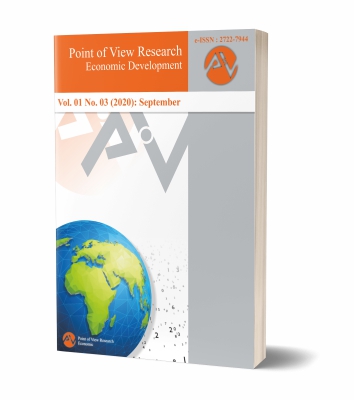THE INFLUENCE OF LEARNING MOTIVATION, FACILITIES AND INFRASTRUCTURE ON PHYSICAL EDUCATION LEARNING ACHIEVEMENT THROUGH KINESTHETIC INTELLIGENCE AT SMP AL BAYYINAH MAKASSAR
Abstract
This study aims to know and elaborate and analyze the Influence of Learning Motivation, Facilities and Infrastructure on Physical Education Learning Achievement through Kinesthetic Intelligence at Al-Bayyinah School Makassar.
This research was carried out by SMP Al-Bayyinah Makassar, which lasted for approximately 2 (two) months from April / d May 2021. This study used a causality design with a quantitative approach. The population in this study is the whole in SMP Al-Bayyinah Makassar as many as 102 students. The sampling technique uses purposive sampling, and the final sample obtained is 102 students. Data collection techniques through observation, interviews, questionnaires and documentation, while data analysis with path analysis. The results showed that, that (1). There is an influence between learning motivation on kinesthetic intelligence at SMP Al Bayyinah Makaasar, with hypothetical test results of 0.141 and significant 0.181, (2). There is an influence between facilities and infrastructure on kinesthetic intelligence at SMP Al Bayyinah Makassar, with the results of the hypothesis test value of 0.270 and significant 0.011, (3). There is no influence of learning motivation on learning achievement at SMP Al Bayyinah Makaasar, with a value of -0.277 and a significant value of 0.004, due to the many factors of students, namely implementing the physical education learning schedule that is carried out on each day, resulting in a lack of asking students to follow the learning process so that it affects the learning achievement of students at SMP Al Bayyinah Makassar, (4). There is a direct influence of facilities and infrastructure on learning achievement at SMP Al Bayyinah Makaasar, with hypothetical test results of 0.473 and significant 0.000, (5). There is an influence of learning achievement on kinesthetic intelligence at SMP Al Bayyinah Makaasar, with hypothetical test results of 0.263 and significant 0.003, (6). There is a direct influence of learning achievement on kinesthetic intelligence in SMP Al Bayyinah Makaasar, from the results of the hypothesis test value of 0.037 and significant 0.000, (7). There is a direct influence of advice and infrastructure on kinesthetic intelligence at SMP Al Bayyinah Makaasar, from the results of the hypothesis test value of 0.066 and significant 0.000.
Downloads
References
Bafadal, I. (2004). Manajemen perlengkapan sekolah teori dan aplikasinya. Jakarta: Bumi Aksara
Bloom, Benjamin S., etc. 1956. Taxonomy of Educational Objectives : The Classification of Educational Goals, Handbook I Cognitive Domain. New York : Longmans, Green and Co
Brian James Hoffman. (2014). Multiple Intelligences of Transformational Leaders: An Empirical Examination. International Journal of Manpower. DOI: 10.1108/01437720610652826
Campbell, julia el, al. 2006. Metode Praktis Pembelajaran Berbasis Multiple Inteligenscis, Depok, Intuisi Press.
Djamarah. 2012. Psikologi Belajar. Jakarta. Rineka Cipta
Faruq, Muhammad, 2007. 100. Permainan Kecerdasan Kinestetik Outdoors.
Penerbit PT. Gramedia Widiasarana
Garcia dkk. (2017). The Effectiviness of Integratong Multiple Intelligences Strategies In A Bilingual Education Programm: A Study Of Writing Skills. Vol.5 No.2 February. Spain.
Gardner, H. (1983). Frames of Mind: The Theory of Multiple Intelligences. New York: Basic Books.
Hanafin, J. (2014). Multiple Intelligences Theory, Action Research, and Teacher Professional Development: The Irish MI Project. Australian Journal of Teacher Education, 39(4).
Hasan, M. Iqbal, Pokok-pokok Materi Metodologi Penelitian dan Aplikasinya, Ghalia Indonesia, Bogor, 2002.
Jasmine, Julia. M.A., 2007. Mengajar Dengen Metode Kecerdasan Majemuk, Cijambe Indah, Nuansa.
Jurnal: Emda, Amna. 2017. Kedudukan Motivasi Belajar Siswa dalam Pembelajaran. Lantanida Journal. Vol 5 No. 2. Hal: 172-182. Di akses pada tanggal 1808-2020 dari: https://jurnal.arraniry.ac.id/index.php/ lantanida/article/view/2838/2064
Kamus Besar Bahasa Indonesia, Depdikbud, 1988.
Lawrence E, Saphiro,. 1998. Mengajarkan Emotional Intelligence Pada Anak.Jakarta : Gramedia.
Mahendra, Agus, 2000. Asas dan Palsafah Pendidikan Jasmani. Bandung. Mulyasa. 2004. Manajemen berbasis sekolah. Bandung: Rosda Karya.
Purwanto, M. N. (2007). Psikologi pendidikan, cet. V. Bandung: PT Remaja Rosdakarya.
Prasetyo, Bambang, Lina Miftahul Jannah. (2008). Metode Penelitian Kuantitatif.
Sardiman. (2009). Interaksi dan Motivasi Belajar Mengajar. Jakarta: Raja.
Grafindo Persada Teori dan Aplikasi. Jakarta: PT Raja Grafindo Persada. Winkel,WS.,Psikologi Pendidikan dan Evaluasi Belajar,Jakarta: Gramedia, 1997.
Syahputra, Erwin, (Universitas Islam Kadiri). (2015). Pengaruh Motivasi Belajar , Sarana Prasarana Belajar , dan Erwin Syahputra Universitas Islam Kadiri. 18(1), 50–65.


















